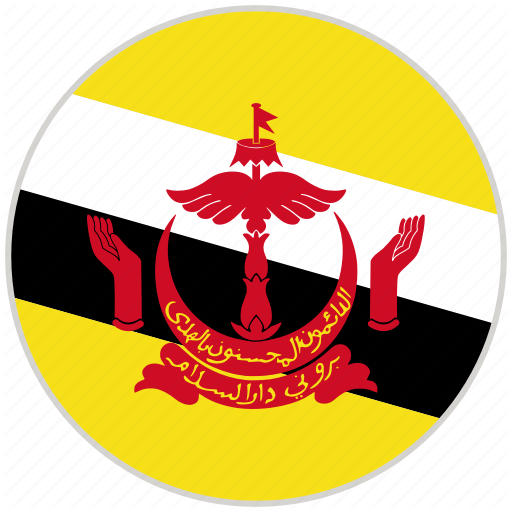Policy Recommendations on East Asia Cooperation:
Towards Sustainable Development and Prosperity
Introduction
1. The Network of East Asian Think-Tanks (NEAT) held its 7th Country Coordinators Meeting (CCM) and 5th Annual Conference (AC) from 20 – 22 August 2007 at Meritus Mandarin Hotel , Singapore
2. The theme of the 5th AC was “East Asia Cooperation: Towards Sustainable Development and Prosperity". It highlights the urgent need to balance development with environmental concerns. Environmental protection can no longer be ignored or sacrificed for the sake of development and economic growth. The challenge is to strike the right balance to achieve sustainable growth and long term prosperity.
3. The discussions at the 7th CCM and 5th AC complement Track 1 efforts to strengthen cooperation among the APT countries and work together to address challenges affecting the region. At the Track 1 level, the APT leaders made a commitment to enhance energy security in the region at the second East Asia Summit in Cebu in January 2007.
4. We reaffirm that the goal of community building in East Asia should be to promote the welfare and well-being of the people and realise the East Asian Vision of Peace, Prosperity and Progress. Community building should be based on universal values including good governance, the rule of law, democracy, human rights, and international law and norms. East Asian countries should promote these values as common goals. We hope that these values would be reflected in the 2nd Joint Statement on East Asia Cooperation that may be issued at the APT Summit in Singapore in November 2007.
5. At the Track 2 level, the six Working Groups (WGs) in NEAT are focused on areas of common interest and concerns to the APT countries to foster cooperation and address common challenges. This document highlights the recommendations of the six WGs in the areas of:
-
Overall Architecture of Community Building in East Asia (Regional Architecture for Non-Traditional Security and Environmental Cooperation in East Asia);
-
East Asian Financial Cooperation;
-
East Asian Investment Cooperation;
-
Enhancement of Cultural Exchange in East Asia;
-
East Asian Cooperation Framework for Migration Labor; and
-
Energy Security Cooperation in East Asia
6. This set of Policy Recommendations was formulated, discussed and approved at the 7th CCM (CCM) with inputs from the 5th AC. The CCM would like to thank all participants for their time and effort in putting together this document. The detailed background and rationale of the six WGs can be found in the various reports.
Recommendations of the Six Working Groups
A. Overall Architecture of Community Building in East Asia (Regional Architectures for Non-Traditional Security and Environmental Cooperation in East Asia )
7. Trans-national crimes. Legal harmonization among member countries is urgently required in order to standardize regional counter-measures to fight trans-national crimes. Existing differences among the APT countries concerning the definition of crimes should be resolved to facilitate effective multilateral cooperation.
8. The APT leaders should initiate specific programs in line with the ASEAN Plan of Action and the 2002 Kuala Lumpur Declaration. In particular, networks that include relevant NGOs and local community organizations for the purpose of providing support to victims of trans-national crimes should be established.
9. Environmental protection. The APT countries should establish mechanisms for regional environmental cooperation on the basis of existing ASEAN frameworks such as AMME/AMME+3, ASOEN, AMAF, ASOF, and ASOEN-HTTF. It is necessary to formulate common principles of environmental protection in the region to facilitate collective action and to develop specific projects for cooperation.
10. Efforts should be made to involve the local community in these cooperation schemes. Public awareness and education programs should also be developed. An APT Global Warming Task Force responsible for identifying, monitoring, and securitizing the threat of global warming in the region needs to be established.
11. Pandemic threats. To deal with threats such as Avian Influenza (AI), regional mechanisms for disease surveillance and control are needed. There is a need to enhance the monitoring capabilities of the APT countries. The APT countries should support, via the existing channel of APTEIDP, the strengthening of the capability of the ASEAN Secretariat.
12. Each country is expected to establish an AI Information Gathering Center to integrate data from related agencies at the national and local levels. Measures to reinforce border control of infected birds/chickens should be adopted by each country. Local communities should also be actively involved. The APT Center
13. The ASEAN Secretariat should be strengthened to play a leading role in designing and coordinating specific programs of action in the above three areas.
B. East Asian Financial Cooperation
14. Beyond Chiang Mai Initiative (CMI). The bilateral swap arrangements under CMI should be turned into standby credit under a multilateral framework and the total credit line should be increased. In the meantime, discussion should be held within the APT framework on the possibility of transforming the standby credit into an East Asian Reserve Cooperation Fund.
15. It is strongly suggested that efforts be made to strengthen the functions of CMI on information exchange, policy coordination and capital flow monitoring. It is desirable to expand the APT Finance Ministers' Meeting into a meeting comprising the Finance Ministers and central bank governors, and to set up working groups to study how capital flow monitoring and early warning on risks can be improved. The NEAT WG on Financial Cooperation will expand their scope of work to review monetary and financial policy and policy coordination among East Asian countries.
16. Asian bond market. An Asian bond market should be developed through capacity building which may include establishing a more effective steering body to guide domestic bond markets; strengthening the infrastructures of domestic bond markets; and, improving credit, taxation and legal environments to create favorable conditions for bond market development. Some of the major measures to promote integration of bonds market may include reducing barriers related to cross-border bond trading in this region; harmonizing legal and supervision issues related to bond market; and, encouraging cooperation among the various securities exchanges.
17. Interaction between government and private-sector cooperation. Financial cooperation should focus on promoting the integration of finance, investment and trade in this region. This requires the active involvement of government and private financial institutions. First, it is proposed that a Promotion Institution for East Asian Monetary and Financial Cooperation be set up. Second, governments and governmental mechanisms should facilitate private financial and monetary operation. Third, governments should mobilize private financial institutions and encourage their active participation in existing investment and trade cooperation.
18. Asian Currency Unit or Asian Currency Unit Index. Despite differing views on what constitutes an Asian currency unit, there is general agreement on the need for an in-depth study on the feasibility of an Asian Currency Unit Index to provide more insights and practical proposals on this topic. It is suggested that appropriate research and planning related to an Asian Currency Unit be carried out and a specialized body designated by the APT countries be responsible to lead this study.
C. Investment Cooperation in East Asia
19. Investment cooperation. To create a more conducive environment for investment cooperation, it is proposed that FTA building be sped up and the investment element in FTA arrangements be strengthened. Greater importance should be attached to new models of East Asian investment cooperation.
20. Infrastructure development. Investment cooperation relating to regional transportation networks should be looked into. The possibility of getting more private sector investment by issuing Pan-Asia transportation network bonds should be explored. It is suggested that a special task force be set up to study cooperation on infrastructure investment and to come up with a comprehensive plan for the consideration of the APT leaders and Ministers next year.
21. Investment environment. To improve the environment for investment cooperation, there should be more transparent law-making and implementation processes, more investor-friendly institutional environment, more enhanced human resources development in service sectors and more effective cooperation on International Property Rights protection. Moreover, bilateral and regional investment rules should be established and incorporated in the FTA arrangements.
22. Green and sustainable investment projects. The APT governments should strongly support Clean Development Mechanism (CDM) related projects in the effort to tackle climate change. It is suggested that pilot projects related to green investment cooperation be set up. For a start, environment-friendly products can be developed by tapping the necessary capital, clean technologies, energy and resources from countries in the region. On this basis, comprehensive pilot projects can be explored. Moreover, there is an urgency to raise corporate awareness of their social responsibility of developing green projects.
23. Glocalization. Glocalization (combining globalization and localization) deserves special attention in the area of investment cooperation. Further studies related to international mergers and acquisitions and especially to develop better understanding of foreign cultures should be developed. Measures should also be taken against the negative effects thereof. Thinking globally and acting locally are both of critical importance in investment.
D. Enhancement of Cultural Exchange in East Asia
24. Obstacles impeding cultural exchange. The obstacles impeding cultural exchange in the region include the lack of an understanding and appreciation of the significance of cultural diversity in the region and the importance of cultural exchange in promoting the East Asian community; the lack of political will, institutional arrangements, adequate funding, and collaborative and concerted efforts by both the public and private sectors to enhance cultural exchange; and, the low priority accorded to culture and to cultural exchange.
25. People-oriented cultural exchange. There is a need for a more participatory, people-oriented cultural exchange with balanced roles on the part of the state, market forces and private sectors.
26. Priority Areas. Efforts should be focused on priority areas to identify ways and means to foster cultural cooperation among the people of the region to build an East Asian community. Each of these priority areas will be looked into by the WG over the next five years:
-
Media (Year 2008)
-
Popular Culture and Cultural Festivities (Year 2009)
-
Education (Year 2010)
-
People-to-people Exchange (Year 2011)
-
Performing Arts and Cultural Exhibition (Year 2012)
27. On the topic of the “Media" in next year's discussion, the discussions will focus on, but not be limited to, the following sub-topics:
-
Mass Media and Broadcasting
-
Internet Media
-
Printing Media and Publication
-
Translation
East Asian Cooperation Framework for Migration Labor
28. Principles. A regional cooperation framework should uphold the following rights of migrant workers and family members residing with them: right to life; right to freedom from torture and inhumane treatment; right to freedom from forced labour, including debt bondage; right to freedom from indiscriminate incarceration and detention; and, right to freedom of movement.
29. Provisions. Source countries should provide migrant workers with information and training before they leave their countries. Host countries should provide them with counselling and advice centers during their service.
30. National laws and regulations of receiving countries should be harmonized wherever possible to ensure that there is consistency throughout the region.
31. The implementation of migrant worker policies should also be guided by international labor standards, in particular by ILO's Multilateral Framework on Labor Migration and its fundamental principles.
32. Protection and Fair Treatment of Migrant Workers. Migrant workers should be protected by national employment legislation which, among other things, specifies normal hours worked, overtime payment rates, rest days, annual leave, medical entitlement and retrenchment benefits (if any).
33. Governments should address issues related to violations of migrant workers' rights and create effective and accessible channels for migrants to lodge their complaints and seek remedy without discrimination and intimidation.
34. Control and Management of Irregular Migration. Governments should ensure that there is close coordination among enforcement agencies, particularly immigration and police, and with labour/human resource ministries.
35. In the event of human trafficking, strong legal sanctions should apply to the traffickers and not the migrant workers who are their victims.
Energy Security Cooperation in East Asia
36. Energy Diversification. The need for energy diversification for APT countries is sufficiently clear, as most of the APT countries are heavily dependent on one or two dominant sources of energy supply. Energy diversification is therefore a key strategy for individual APT countries to enhance their overall energy security.
37. An appropriate energy mix can help individual APT countries cushion the impact of an unexpected supply-side shock. In the long run, it is also a viable strategy to cope with the day when oil production in the world peaks or recoverable oil reserves run out.
38. The APT countries should explore all possible avenues relating to energy cooperation, especially in the areas of energy conservation and diversification.
39. They should facilitate the sharing of information, technology and know-how on the use of both fossil and non-fossil fuel. In particular, more advanced APT countries should consider sharing energy-saving technology with others.
40. There is growing and urgent need to explore viable alternatives, particularly renewable sources of energy such as safe nuclear energy, clean coal, solar energy and biofuels. The APT countries should also consider undertaking research in appropriate technology for renewable sources of energy.
41. The APT countries should hasten the development of the Trans ASEAN Gas Pipeline (TAGP) as an alternative energy source and reduce the heavy reliance on oil in the transportation sector.
42. They should remove impediments to cross-border investments for energy diversification projects and devise a conducive set of policies and incentives to achieve a more viable energy mix.
43. The ASEAN Centre for Energy (ACE) should explore expanding its scope of activities to cover all APT countries. In particular, the centre should pay more attention and channel more resources to energy conservation and diversification efforts.











.png)



.png)




